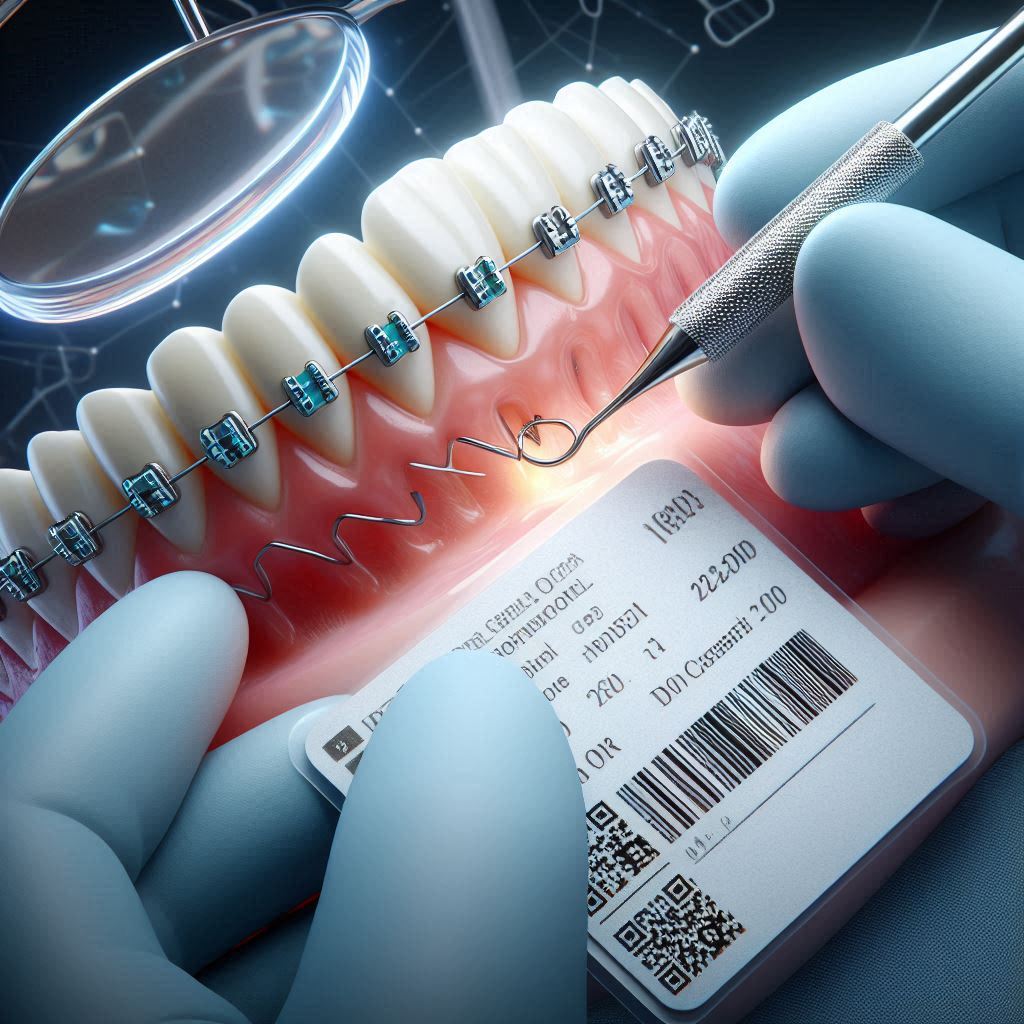Dental Codes for Removing Orthodontic Attachments
Orthodontic treatments have revolutionized the way we approach dental health and aesthetics. From traditional braces to modern clear aligners, orthodontics has made it possible to achieve perfectly aligned teeth and a confident smile. However, the journey doesn’t end with the removal of braces or aligners. One critical step in the process is the removal of orthodontic attachments, which are small devices bonded to teeth to assist in tooth movement.
Understanding the dental codes associated with this procedure is essential for both dental professionals and patients. Dental codes, such as the American Dental Association’s (ADA) Current Dental Terminology (CDT) codes, ensure standardized billing and communication across the industry. This article delves into the specifics of the dental code for removing orthodontic attachments (D8980), the procedure itself, and its significance in orthodontic care.

2. Understanding Orthodontic Attachments
Orthodontic attachments, also known as buttons, brackets, or cleats, are small devices made of metal, ceramic, or composite materials. They are bonded to the teeth using dental adhesive and serve as anchors for orthodontic appliances like braces or aligners. These attachments play a crucial role in applying the necessary forces to move teeth into their desired positions.
Types of Orthodontic Attachments
- Brackets: Used in traditional braces, these are bonded to the front or back of teeth.
- Buttons: Small metal or ceramic attachments used with elastic bands or aligners.
- Cleats: Used to provide additional grip for orthodontic appliances.
3. The Importance of Dental Codes in Orthodontics
Dental codes are a standardized system used to describe dental procedures for billing and insurance purposes. They ensure clarity and consistency in communication between dental professionals, insurance companies, and patients.
Key Dental Codes in Orthodontics
- D8090: Comprehensive orthodontic treatment.
- D8670: Periodic orthodontic treatment visit.
- D8980: Removal of fixed orthodontic appliances.
The focus of this article is on D8980, the code used for the removal of orthodontic attachments.
4. Dental Code for Removing Orthodontic Attachments: D8980
The ADA’s CDT code D8980 is specifically designated for the removal of fixed orthodontic appliances, including brackets, buttons, and cleats. This code is used when the orthodontic treatment is complete, and the attachments are no longer needed.
When is D8980 Used?
- After the completion of orthodontic treatment.
- When a patient switches from traditional braces to clear aligners.
- In cases where attachments need to be replaced or repositioned.
Billing and Insurance Considerations
- Insurance Coverage: Most dental insurance plans cover the removal of orthodontic attachments under D8980, but coverage may vary.
- Out-of-Pocket Costs: Patients should verify their insurance benefits to understand any potential out-of-pocket expenses.
5. Step-by-Step Process of Removing Orthodontic Attachments
The removal of orthodontic attachments is a precise and delicate procedure that requires skill and attention to detail. Here’s a step-by-step breakdown:
Step 1: Patient Preparation
- The dentist or orthodontist explains the procedure to the patient.
- Protective eyewear is provided to shield the patient’s eyes from debris.
Step 2: Removal of Archwires and Ligatures
- If the patient has traditional braces, the archwires and ligatures are removed first.
Step 3: Detaching the Attachments
- A specialized dental tool, such as a bracket remover or debonding pliers, is used to gently detach the attachments from the teeth.
Step 4: Cleaning and Polishing
- Any residual adhesive is removed using a dental handpiece.
- The teeth are polished to restore their natural smoothness.
Step 5: Post-Removal Care
- The patient is advised on oral hygiene practices to maintain their newly aligned teeth.
6. Challenges in Removing Orthodontic Attachments
While the removal process is generally straightforward, it can present certain challenges:
Potential Risks
- Enamel Damage: Aggressive removal techniques can damage the tooth enamel.
- Patient Discomfort: Some patients may experience sensitivity during the procedure.
Mitigating Risks
- Using the right tools and techniques.
- Ensuring the patient is comfortable and informed throughout the process.
7. Common Questions About Dental Codes and Orthodontic Procedures
What is the difference between D8980 and D8990?
- D8980: Removal of fixed orthodontic appliances.
- D8990: Unspecified orthodontic procedure.
Can D8980 be billed multiple times?
- Typically, D8980 is billed once per treatment plan.
8. The Role of Dental Insurance in Orthodontic Treatment
Dental insurance plays a significant role in making orthodontic treatment accessible. Understanding how insurance covers procedures like attachment removal can help patients plan their treatment effectively.
9. Case Studies: Real-Life Scenarios of Attachment Removal
Case Study 1: Transitioning from Braces to Aligners
A 16-year-old patient completed traditional braces treatment and opted for clear aligners. The orthodontist used D8980 to bill for the removal of brackets.
Case Study 2: Replacing Damaged Attachments
A 25-year-old patient had a damaged bracket replaced during treatment. The removal of the old bracket was billed under D8980.
Common Dental Codes in Orthodontics
| Code | Description |
|---|---|
| D8090 | Comprehensive orthodontic treatment |
| D8670 | Periodic orthodontic treatment visit |
| D8980 | Removal of fixed orthodontic appliances |
10. Frequently Asked Questions (FAQs)
Q1: Is the removal of orthodontic attachments painful?
- The procedure is generally painless, but some patients may experience mild discomfort.
Q2: How long does the removal process take?
- The process typically takes 30-60 minutes, depending on the number of attachments.
Q3: Can I eat immediately after the removal?
- Yes, but it’s advisable to avoid hard or sticky foods for the first 24 hours.
11. Conclusion
The removal of orthodontic attachments is a crucial step in completing orthodontic treatment. Understanding the dental code D8980 and the procedure itself empowers patients and ensures smooth communication between dental professionals and insurance providers.
12. Additional Resources
- American Dental Association (ADA): www.ada.org
- American Association of Orthodontists (AAO): www.aaoinfo.org
- Dental Insurance Guide: www.dentalinsurance.com


